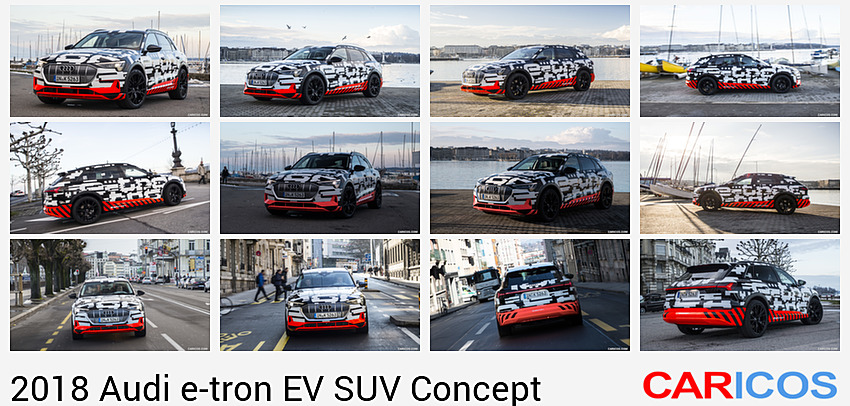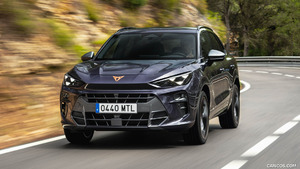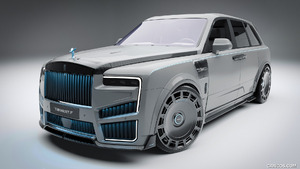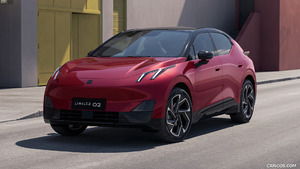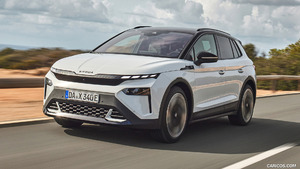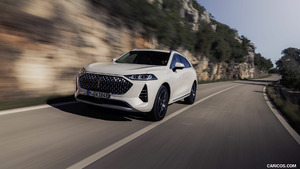Audi e-tron Concept
- Comfortable, spacious interior and long range make it suitable for everyday use
- Design camouflage visualizes high-voltage drive system and battery technology
- More than five million test kilometers (3,106,856 mi) on four continents
Audi unveils the prototype for its first all-electric model at the Geneva Motor Show. The sporty SUV combines the space and comfort of a typical luxury car with a range suitable for everyday use. Until the start of series production, almost 250 development vehicles will complete testing under extreme conditions worldwide. Specially camouflaged prototypes kick off the chase for the most spectacular photos.
The Audi e-tron prototype offers a preview of the first all-electric model from the brand with the four rings. The camouflaged exterior conceals a sporty premium SUV with space for five people along with plenty of luggage – the space and comfort are similar to that of a typical Audi luxury class model. The range suitable for longer journeys and the comprehensive charging options allow customers to drive purely electrically without making compromises. The production version of the Audi e-tron prototype can fill up on electricity at fast-charging stations with up to 150 kW charging capacity. In just under 30 minutes, the SUV is then ready for the next leg of the long-distance journey. The electrical quattro catapults the four-wheel drive into a new age and ensures strong performance on any terrain. The production version of the Audi e-tron launches on the European market at the end of 2018.
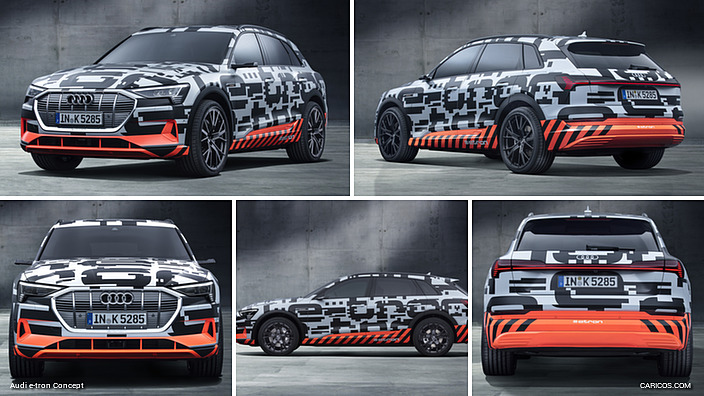 2018 Audi e-tron EV SUV Concept
2018 Audi e-tron EV SUV Concept
“Audi sets an important milestone for the company’s future with its first purely electrically powered model,” said Rupert Stadler, Chairman of the Board of Management of AUDI AG. “In 2020 we will have three all-electric vehicles in our product range, with a four-door Gran Turismo – the production version of the Audi e-tron Sportback concept – and a model in the compact segment joining the sporty SUV. We will be launching more than 20 electric cars and plug-in hybrids by 2025 – spread across all segments and concepts,” the Audi CEO explains.
Showcasing high-voltage technology: the design camouflage
The Audi e-tron prototype does not wear the traditional prototype camouflage, but instead illustrates its electrification with a specially developed design film. The distorted e-tron lettering stretches across the entire flank, as if it was charged with electricity. The “e” winds its way around the tailgate at the height of the front fender and is literally electrifying. Mimicking the high-voltage grid, orange elements illustrate the fact that the Audi e-tron prototype is fully electric – the lower part of the car, for example, is encircled with alternating orange and black segments. The expressive sills, with their colorful inserts, indicate where the battery and therefore energy center of the car are located.
Four continents, more than five million kilometers: testing under extreme conditions
Until the first electric model of the brand with the four rings is launched at the end of the year, the sporty SUV will complete test drives on four continents. Whether in the cold of Scandinavia or the heat of Africa, in the mountainous altitudes of Asia or on the north loop of the Nürburgring, in the stop-and-go traffic of major Chinese cities or on American highways – the purely electrically powered SUV has to prove its all-round qualities in uncompromising practical tests under extreme conditions. Audi is testing the pre-series vehicles for customer-focused operation in all climate zones ranging from below -20 to above +50 degrees Celsius (-4° to +122° F). In addition, intensive tests of the charging technology are being conducted worldwide – an important safeguarding criterion for battery-electric models. The individual charging standards are tested on proving grounds and in public areas to validate the full range of different charging options. In total, just under 250 Audi e-tron prototypes are used in the tests. They will cover more than five million kilometers (3,106,856 mi) – roughly equivalent to 125 times around the earth and 85,000 hours on the road.

